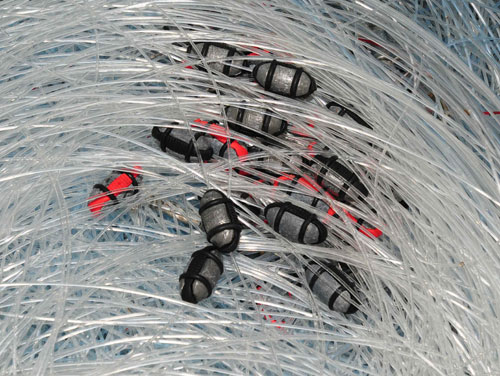The International Plan of Action for Reducing Incidental Catch of Seabirds in Longline Fisheries (IPOA-Seabirds) produced by the Food and Agriculture Organization of the United Nations (FAO) stipulates that countries with longline fisheries should assess their fisheries to determine if a bycatch problems exists, and if so, to determine its extent and nature. If a problem is found to exist then countries should adopt a National Plan of Action (NPOA-Seabirds). A number of countries has already adopted their NPOA-Seabirds, including among ACAP Parties, Brazil, Chile, New Zealand, South Africa and Uruguay (click here).
Australia has now published an assessment of all the longline fisheries that operated within its jurisdiction over the period 2003 to 2006 (click here), updating a previous assessment carried out in 2003.
Thirty fisheries were assessed for their impact on seabirds. A total of 32 seabird taxa was identified as having been killed within the Australian Fishing Zone (AFZ). Albatrosses formed only 10% of the total number (1800-4500) of birds estimated to have been killed each year, with other procellariiform species, such as the Flesh-footed Shearwater Puffinus carneipes, dominating the catch.
Bycatch in Australian waters has been considerably reduced since the previous assessment, brought about by the implementation of mitigation measures such as night-setting and line-weighting, and by increased observer programmes. A northward shift in fishing activities is also thought to have contributed to the decline in seabird bycatch.
The 2008 Assessment concludes that the Australian Threat Abatement Plan (2006) for the Incidental Catch (or Bycatch) of Seabirds during Oceanic Longline Fishing Operations (TAP) is largely fulfilling the role of an NPOA-Seabirds and effective implementation of the TAP should address the major risks posed to seabirds by Australian longline fisheries.
The report further recommends that an assessment of seabird bycatch in Australian trawl fisheries should now be undertaken to measure their impact on seabird populations and that further development and trialling of seabird bycatch mitigation measures for pelagic longline gear remains a high priority.

References:
Australian Antarctic Division undated. Threat Abatement Plan 2006 for the Incidental Catch (or Bycatch) of Seabirds during Oceanic Longline Fishing Operations. Canberra: Australain Antarctic Division, Department of the Environment and Water Resources. 30 pp. http://www.aad.gov.au/MediaLibrary/asset/MediaItems/ml_399394109837963_FINAL%20ThreatAbatement2007-4-combined6c.pdf.
Baker, G.B. & Finley, L.A. 2010. 2008 National Assessment Report for Reducing the Incidental Catch of Seabirds in Longline Fisheries. Canberra: Bureau of Rural Sciences. 101 pp. http://adl.brs.gov.au/data/warehouse/pe_brs90000004190/SeabirdAssessment2008_20100318_ap14.pdf).
John Cooper, ACAP Information Officer, 21 March 2010

 Français
Français  English
English  Español
Español